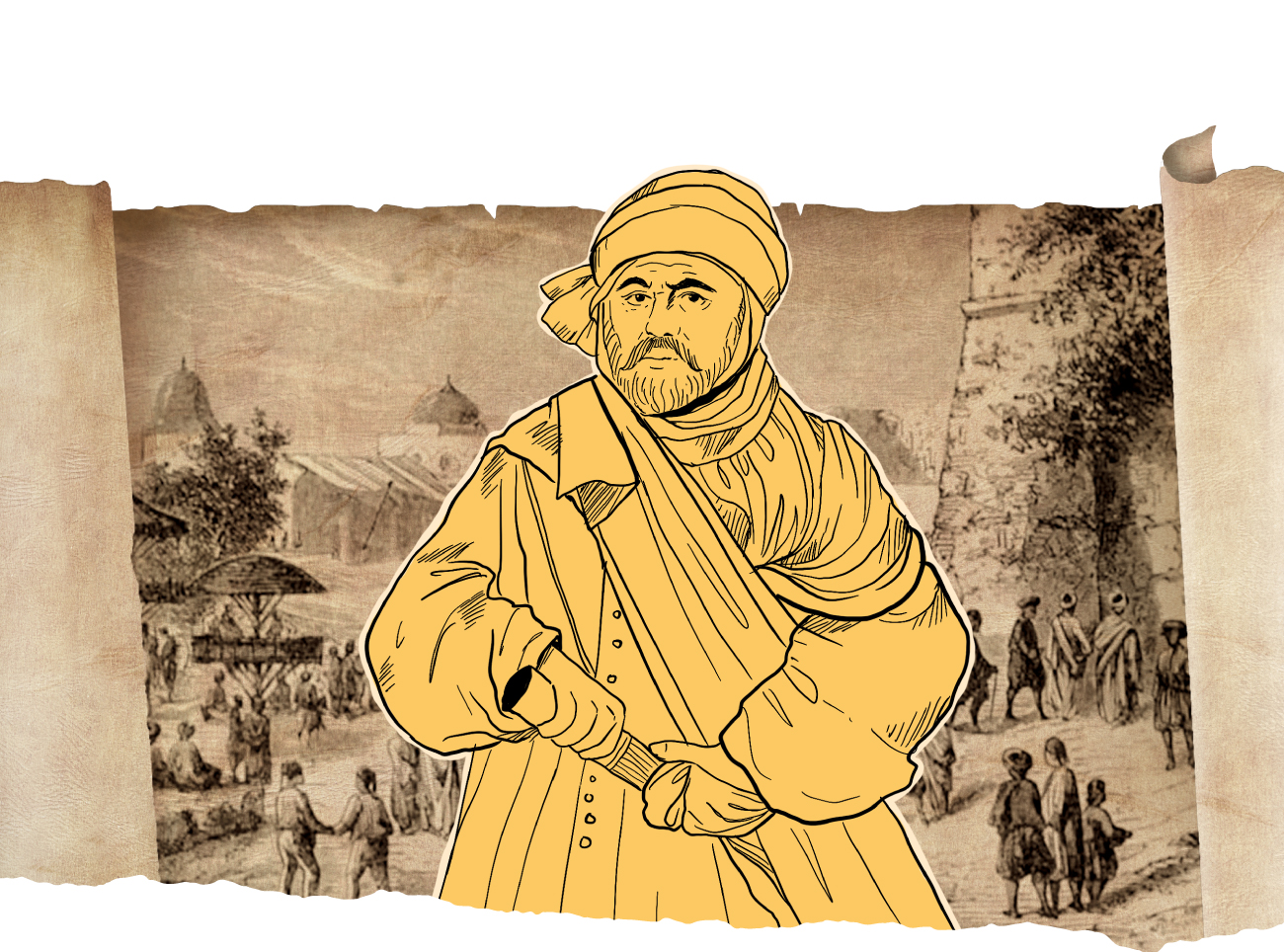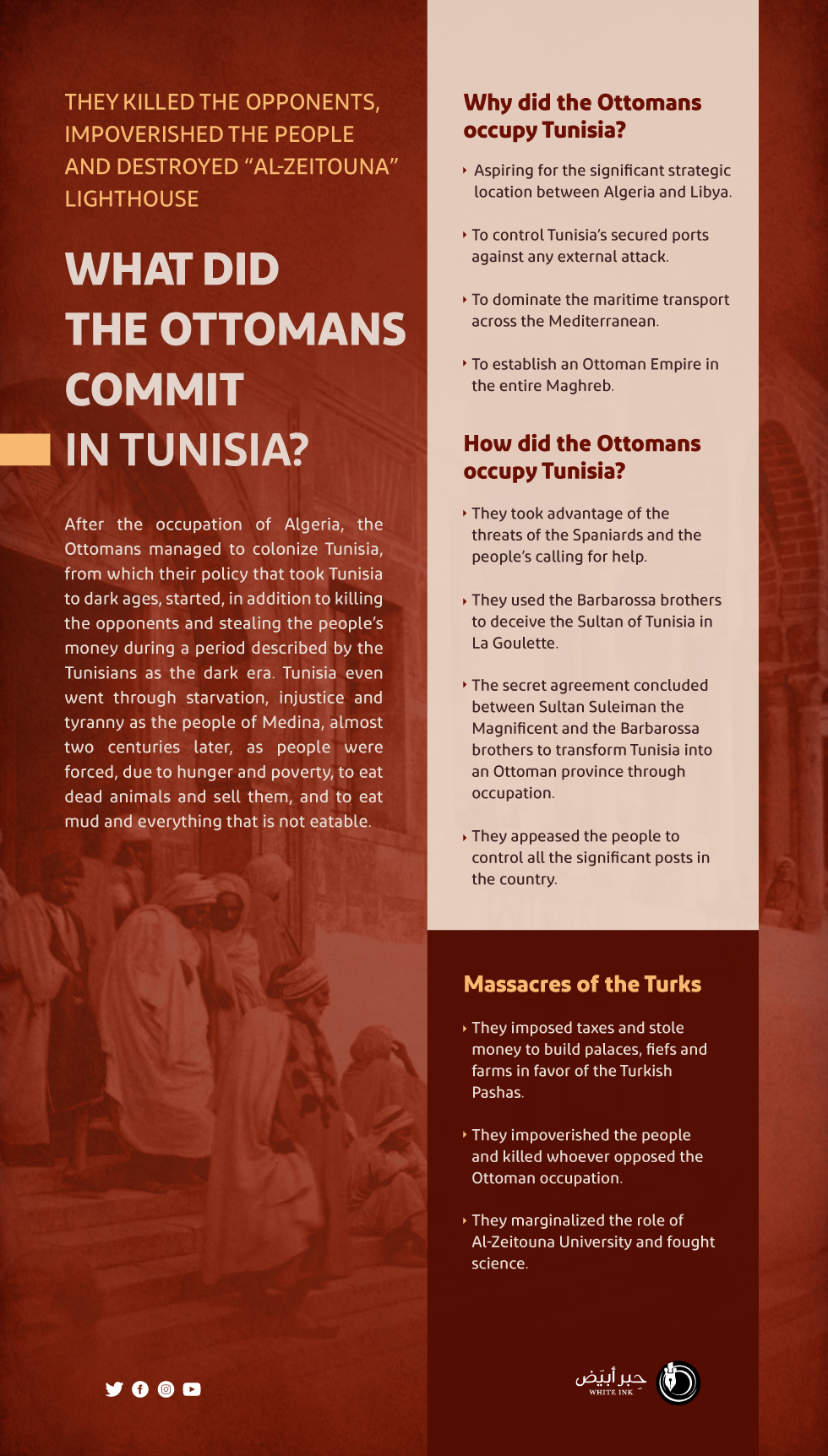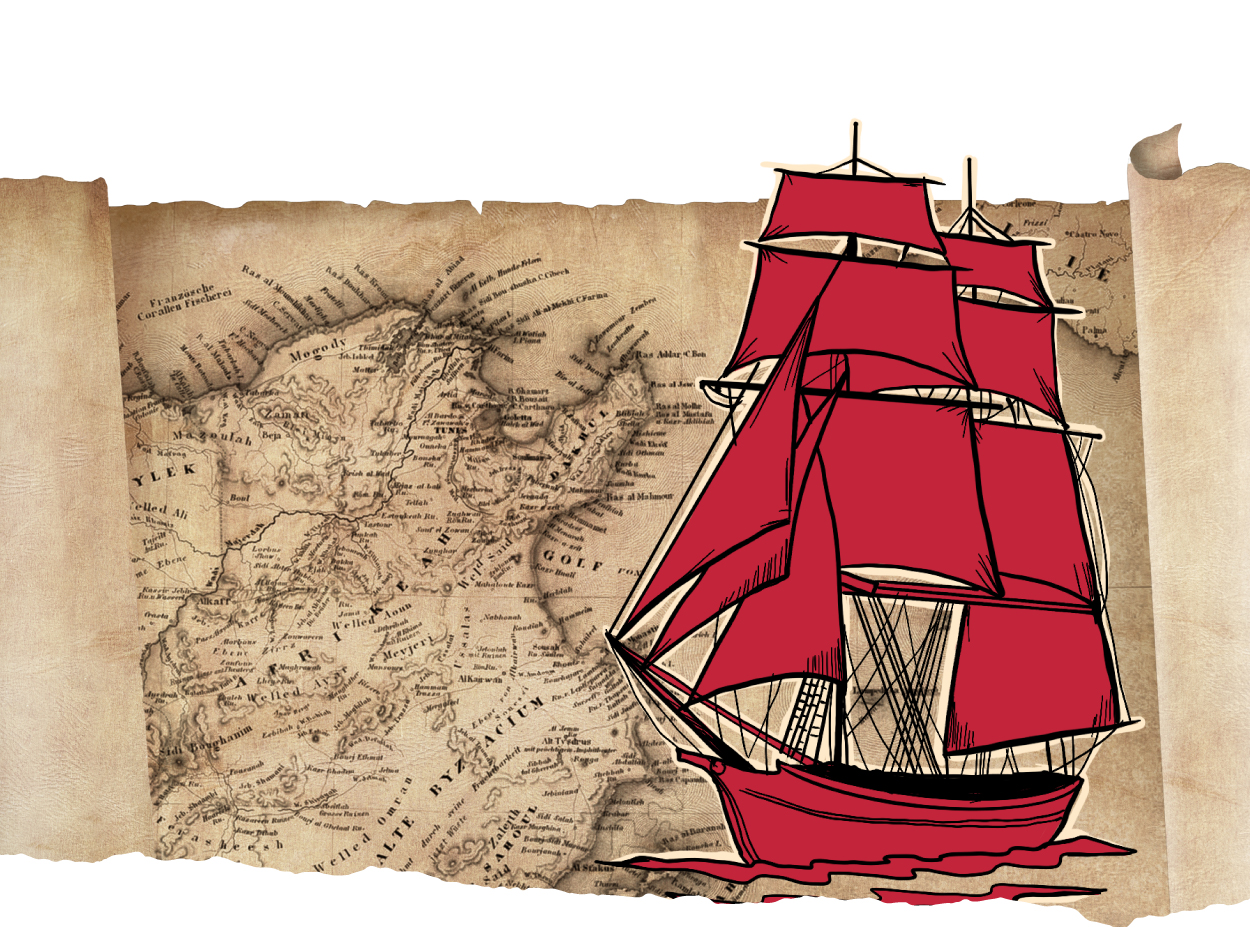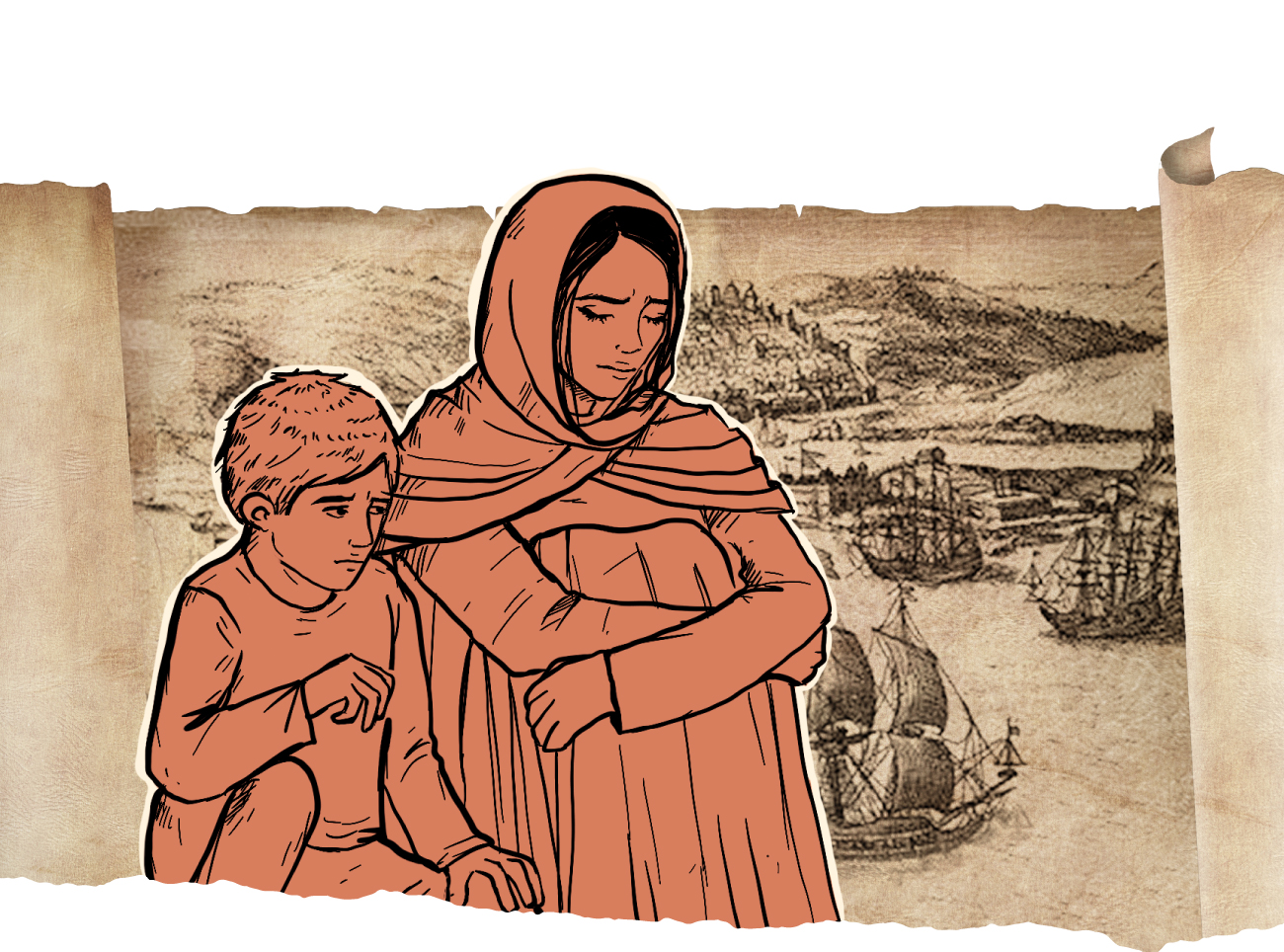
The Turks forced the people to flee to the Spaniards to escape from the massacres
Tunisia between the atrocities of Spanish colonialism and the brutality of the Ottoman occupation
During the medieval historical ages, in which the great empires competed, the small states were the target they sought, especially if the strategic location of those states was important. This is what happened to Tunisia in the middle of the sixteenth century AD, when its miserable luck caught it between two occupations, the first of which was Spanish and the second by the Ottoman Empire. The two were worse than each other.
The goal of the Spaniards was clear, not only to occupy Tunisia, but to put a limit on the rising Ottoman influence in the Mediterranean, which is considered a threat to Spain despite diplomatic relations. Spain’s strategy to achieve this goal was to concentrate on the Tunisian coasts and place its garrisons there without penetrating into Tunisia. Therefore, the Spanish presence was concentrated in Bizerte, La Goulette, Mahdia and Djerba.
As for the Ottoman Empire, its strategy centered on controlling navigation in the Mediterranean. The Turkish sultans worked to extend their influence to most Islamic countries, especially after the Ottoman sultan used the deceptive religious promotion under the title of “Commander of the Faithful”, so the Ottoman Empire supported the piracy movement in the coasts of North Africa. Since the second half of the sixteenth century, the Ottoman Empire planned to eliminate the Hafsid state in Tunisia through its governors in Algeria and Tripoli, as well as to eliminate the Spanish presence in some Tunisian coasts.
On the other hand, the attitude of local powers in Tunisia should not be ignored regarding this international conflict over Tunisia, which had certainly its effects on these local powers. The Hafsid state was the most important of these powers, as it was severely weakened as a result of the lack of its financial resources and the decline of its political influence. The Hafsids felt the great danger from the presence of the Ottomans in Algeria to the west and Tripoli to the east.
The conflict between the Hafsids and the Ottomans took on a religious and political character when the Ottoman Sultan granted himself the title of “Commander of the Faithful”, while the Hafsid Sultan considered himself “the Commander of the Faithful”. From here, the Hafsids resorted to an alliance with the Spaniards against the Ottomans in order to preserve their power, as the Hafsids realized that the goal of the Ottomans was to eliminate the Hafsid state and control the entirety of Tunisia, while the danger of the Spaniards was limited to some important ports only.
The Tunisian tribes realized the Ottoman tyranny that awaited them, so the Sultan of the Hafsid state decided to seek help from the Spaniards.

Hence, Al-Hassan Al-Hafsi appealed to Charles V, King of Spain, against Khair Al-Din Barbarossa, which led to the entry of Spanish soldiers into Tunisia. The Tunisian elite objected to this matter and saw it as a desecration of Tunisia by the entry of “infidels” into the Tunisian capital. According to the Tunisian historian Abdul Hamid Haniyeh: “This made the Hafsids lose the legitimacy that civil society used to give them. After that, the Hafsid aristocracy tried to restore this legitimacy by winning over the people of Tunis when it overthrew Sultan Al-Hassan, making him a scapegoat and replacing him with his son Ahmed, but it did not succeed in restoring its previous influence and in rebuilding the political centralization in the country”.
The Tunisian tribes in the interior had a different attitude from that of the civil elite, as the local leaders feared the Ottoman intervention because they realized the central tendency of the Turks, as they did in Algeria and Tripoli, which contradicts the influence of the tribes inside Tunisia. Therefore, the Tunisian tribes supported the Hafsid state and the Spaniards against the Ottoman influence in order to maintain their autonomy, and some other tribes that supported the Sufi movement resorted to complete independence from any central authority.
In light of the international struggle over Tunisia, the weakness of the Hafsid state and the internal struggles of Tunisia, it was easy for the Ottomans to occupy Tunisia since 1574 AD. However, with the arrival of Hussein Bey, as Al-Husseiniya family was formed, succeeded in obtaining a kind of autonomy and supported the Arabic language and religious scholars. This family also conducted many reforms.


- Abdul Hamid Haniyeh, Ottoman Tunisia, 2nd Edition (Tunisia: Tabr Al-Zaman, 2012).
- Muhammad Al-Hadi Al-Sharif, The History of Tunisia from Prehistoric Times to Independence, translated by: Muhammad Al-Shoush and Muhammad Ajina, 3rd Edition (Tunisia: Dar Seras, 1993).
- Al-Monsef Al-Tayeb, “Sphere and Authority in Tunisia during the Ottoman Era”, Tributaries journal, Tunisia: Issue 4, (1998).
- Rida Ibn Rajab, Jews of the Court and the Jews of the Authority in Ottoman Tunisia (Beirut: Dar Al-Mada, 2010).
- Shawki Al-Gamal, The Great Maghreb (Cairo: The Anglo Bookshop, 1977).


The Turkish pirates made the Spaniards a pretext to destroy the Hafsid state
The day in which Tunisia entered the tunnel of Ottoman occupation and oppression
The Ottomans destroyed all the countries they entered. They were always looking for the enlightened cities that were distinguished by a knowledge role and an important strategic location in order to control, extinguish and strip them of all virtue and advantage, as if hostility to the Arabs was something they inherited and brought up on.
This is how the Othman sultans and their pirates looked at Tunisia, located in the eastern Maghreb, distinguished by its location, which in turn contributed to its strategic importance, in addition to its presence between Algeria and Libya, as well as the enormous possibilities offered by its ports in controlling maritime transportation in the Mediterranean and the natural and human characteristics that Allah endowed it with. It represents the farthest parts of the Maghreb and the African continent to the north, as it is less than 140 km from the island of Sicily, and less than 200 km from the island of Sardinia. The 37th latitude intersects with its north and extends to the south of the Iberian Peninsula, the island of Sicily and the Peloponnese peninsula. With its location on one of the banks of the Strait of Sicily, it was a target of colonial countries since ancient times.
The geographical location of Tunisia and its ports on the Mediterranean Sea made it a target for the greedy colonial powers, led by the Ottomans.

The eastern coasts of Tunisia are characterized as being safe, hospitable and not prone to cyclones like its neighbors. Its bays are open to a calm sea that encourages visitors. All these natural and topographical conditions made it the target land for invaders and occupiers through the ages.
Among those invaders were the Turks that were aspiring to occupy it to achieve their ambitions, such as the Barbarossa brothers. In the fifteenth century AD, the Turkish pirates were carrying out their activities on the coasts of North Africa. Some of them were working for their own interests and the other for the benefit of the Ottomans. Their aim was to loot and collect spoils, and among them were Aruj and his brother Khair Al-Din, the most prominent sea pirates.
The two brothers had a role in the naval invasions in the Mediterranean and attacking and terrifying European ships during the sixteenth century AD. They contributed to facilitating the arrival of the Ottomans to occupy parts of North Africa, such as Tunisia, Algeria and others. They ended up on the island of Djerba, opposite the Tunisian shores, from which they contacted the Hafsid Sultan in Tunisia and persuaded him to allow them to settle in the famous port of La Goulette, on the condition that they would take it as a base for them to launch their naval battles and pay the Hafsid Sultan one-fifth of the spoils they would obtain.
As usual for the Ottoman rulers who break covenants and hide their malicious intentions, the Barbarossa brothers worked to eliminate the presence of the Hafsids in Tunisia, which prompted them to search for a way for them to remain in power. The plan was to exploit the presence of the Spaniards in Tunisia and to stay under the pretext of driving them out, when the reality was otherwise. What they did not announce was that they were preparing for the arrival of the Turks to the coasts of North Africa. This became clear in 1533 when Sultan Suleiman I summoned Khair Al-Din Barbarossa to Istanbul and gave him full support in order to occupy Tunisia, end the rule of the Hafsids, the legitimate rulers in it, and transform it into an Ottoman province. In fact, the Spanish occupation had ended, but it was replaced by the Ottoman Turkish occupation.


- Memoirs of Khair Al-Din Barbarossa, translated by: Mohamed Darrag (Algeria: Al-Asala Company, 2010).
- Abdel Moneim Al-Jumai’e, The Ottoman Empire and the Maghreb (Cairo: Dar Al-fikr Al-Arabi, 2007).
- Muhammad Al-Hadi Al-Sharif, The History of Tunisia from Prehistoric Times to Independence, translated by: Muhammad Al-Shoush and Muhammad Ajina, 3rd Edition (Tunisia: Dar Seras, 1993).
- Al-Abbasi Muhammad, “Introducing a Manuscript: The News of the arrival of Aruj and his brother Khair Al-Din to Algeria by its Author Khair Al-Din Barbarossa”, Journal of Faculty of Arts & Humanities, University of Nouakchott, Nouakchott: Issue 8, (2016).
- Abdul Hamid Haniyeh, Ottoman Tunisia, 2nd Edition (Tunisia: Tabr Al-Zaman, 2012).
- Al-Monsef Al-Tayeb, “Sphere and Authority in Tunisia during the Ottoman Era”, Tributaries journal, Tunisia: Issue 4, (1998).

Tunisians Died of Starvation When Ottomans Occupied Their Country
In Tunisia, Ottomans Forced People to Eat and Sell Dead Meat Due to Poverty
With the same strategy and brutal colonial attitude showing hatred towards Arabs and Islam, Ottoman Turks repeated Algerian suffering in Tunisia when the absence of country manifestations in some cities was a fertile environment for Ottoman barbarism. Although it was slightly different in Tunisia which was considered the core foundation of a country that had some kind of legal personality what made it interact with its regional surroundings through a kind of autonomy.
Such political reality was confirmed by Khairuddin Barbarossa in his memoirs saying, “As for Tunisia and Tlemcen which were ruled by Hafsids and Banu Abd Al- Wadi, they were no longer important”. It seems that the quaking political situation in Tunisia drove Ottomans to direct their ambitions towards this country owing to its geographical location on the coasts of the Mediterranean Sea. It was also an attempt to connect it with the rest of the North African countries occupied by Ottomans, especially after the fall of Egypt in (1517).
Following their approach in Algeria, Turkish pirates exploited Spanish provocations and harassments to Tunisian coasts in order to offer their services to the Sultan of Tunisia in an attempt to provide reassurances to the latter that there was no intention to occupy his country. That was the dissimulation they showed to every Arab Ruler whose land they wanted to occupy.
Internal conditions from which Tunisia has suffered were a contributing factor of Turks occupation as Hafsid Tunisia was experiencing internal conflicts. Therefore, some people sought the help of Khairuddin Barbarossa who was eagerly awaiting for such opportunity in order to enter Tunisia subjecting it to Ottoman Sultan owing to its distinguished geographical location on the Mediterranean Sea and its great nearness to European coasts. This was a favorable starting point for piracy campaigns which Turks were good at.
Turks have occupied Tunisia when some people started corresponding with Khairuddin in order to liberate them from Sultan Al- Hasan to which he positively answered. He did not hesitate to organize a campaign heading towards Tunisia which he began preparing in the same year. Then, he succeeded to occupy it in (1574). Perhaps adhering to the research content makes us briefly talk about the stages of subjecting Tunisia to the Sultan of pirates, and rather focus on the manifestations of civilizational halt, as well as scientific and cognitive unproductiveness that overwhelmed Tunisia during that period of the history of this Maghreb country. This prompted some people to liken the Ottoman occupation period to a cemetery where every beautiful thing in the green Tunisia has been buried.
All novels almost agreed that Turks, since their entry into Tunisia, aimed at burdening the public with taxes whose revenues were taken to build palaces and plant estates. Anyone who opposed them was put to the sword as they killed, plundered, robbed and impoverished Tunisia people in order to consolidate their occupation pillars. Such situation was described by the Spanish historian, de Haedo, saying. “Khairuddin Barbarossa started using all his genius ability to gather all necessary wealth as typical of tyrants. He used to obtain it either through intimidation and coercion, or through violence according to Turkish way… He has plundered a lot without being resisted”.
Historical novels agreed that Ottomans enslaved people of Tunisia in a way similar to stealing, killing, imposing taxes, and impoverishing the country.

Tunisia kept suffering from barbaric Ottoman Occupation because it was subjected by Turkish pirates coming from Algeria who were only interested in possessing Tunisia wealth and exploiting its strategic location. They exhausted its people through imposing taxes and humiliated their dignity. They tried to change the sectarian identity of the country by trying to replace Maliki school with Hanafi school. This motivated them to marginalize any role of Al- Zaytona mosque. Therefore, we could not find any feature of religious and scientific sparkle of such landmark whose name was linked with the civilizational spread and religious sparkle of Tunisia.
Perhaps the overall condition of the people of Tunisia throughout the period of Turkish rule can be summarized in the writing of the Algerian historian, Ibn Mufti, saying, “Kairouan was besieged and was known for its expensive wheat as the price of Sa’ (cubic dry measure) of wheat reached sixty riyals. Their condition was too bad that they sold the blood of slaughtered animals. People ate date kernels, and flour particles remaining in the sieve. Rich people sold what they had while poor people died. People who did not eat for two or three days were not rare phenomenon”.


- Memoirs of Hayreddin Barbarossa, translated by: Mohammed Darag (Algeria: Al- Asala Company, 2010).
- Saleh Abbad, Algeria during the Turkish rule (Al- Jaza’r Khilal Al- Hokm Al- Turkey)1514- 1830 (Algeria: Dar Houma, 2012).
- Fray de Haedo, History of Kings of Algiers, translated by: Abdulaziz Al- Ala (Algeria: Dar Al- Hoda, 2013).
- Shawki Al- Gamal, The Great Arab Maghreb (Al Maghreb Al- Araby Al- Kabir) (Cairo: Anglo Library, 1977).
- Abdulhamid Haniyeh, Ottoman Tunisia (Tunis Al- Othmanya), ed. 2 (Tunisia: Tabr Al- Zaman, 2012).
- Mohammed Al- Hadi Al- Sharif, Tunisia’s History from Prehistoric Times to Independence, translated by: Mohammad Al-Shoush, Mohammad Ajina, ed. 3 (Tunisia: Ceres Editions, 1993).
- Ibn Al- Mufti Hussein bin Rajab Shawish “Restrictions of Ibn al-Mufti in the History of the Pashas and Scholars of Algeria” (Takyidat ibn almoufti fi tarikh bachawat aljazair wa oulamaiha), compiled by Fares Kawan, 2009.





